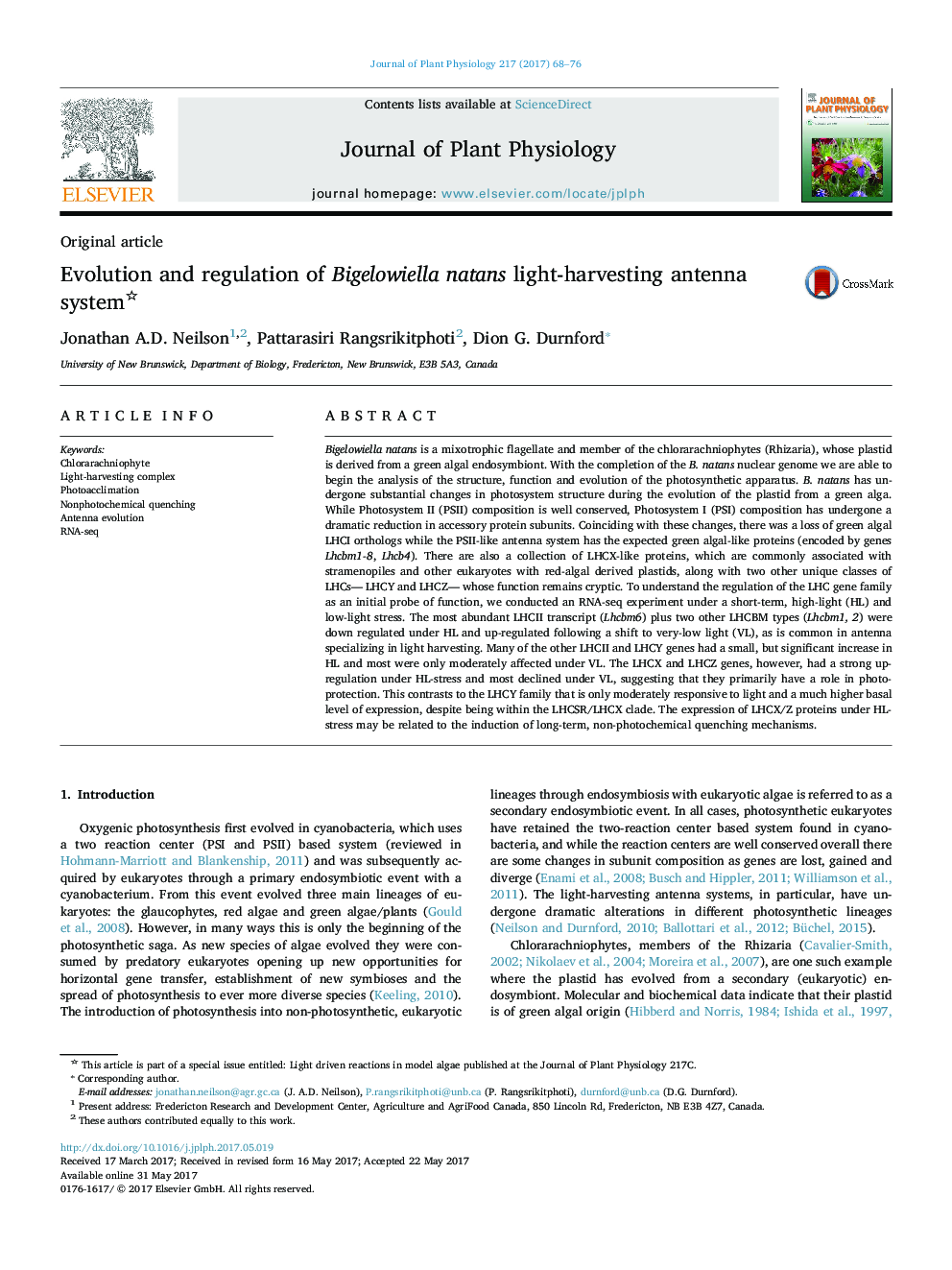| کد مقاله | کد نشریه | سال انتشار | مقاله انگلیسی | نسخه تمام متن |
|---|---|---|---|---|
| 5517964 | 1543861 | 2017 | 9 صفحه PDF | دانلود رایگان |

Bigelowiella natans is a mixotrophic flagellate and member of the chlorarachniophytes (Rhizaria), whose plastid is derived from a green algal endosymbiont. With the completion of the B. natans nuclear genome we are able to begin the analysis of the structure, function and evolution of the photosynthetic apparatus. B. natans has undergone substantial changes in photosystem structure during the evolution of the plastid from a green alga. While Photosystem II (PSII) composition is well conserved, Photosystem I (PSI) composition has undergone a dramatic reduction in accessory protein subunits. Coinciding with these changes, there was a loss of green algal LHCI orthologs while the PSII-like antenna system has the expected green algal-like proteins (encoded by genes Lhcbm1-8, Lhcb4). There are also a collection of LHCX-like proteins, which are commonly associated with stramenopiles and other eukaryotes with red-algal derived plastids, along with two other unique classes of LHCs- LHCY and LHCZ- whose function remains cryptic. To understand the regulation of the LHC gene family as an initial probe of function, we conducted an RNA-seq experiment under a short-term, high-light (HL) and low-light stress. The most abundant LHCII transcript (Lhcbm6) plus two other LHCBM types (Lhcbm1, 2) were down regulated under HL and up-regulated following a shift to very-low light (VL), as is common in antenna specializing in light harvesting. Many of the other LHCII and LHCY genes had a small, but significant increase in HL and most were only moderately affected under VL. The LHCX and LHCZ genes, however, had a strong up-regulation under HL-stress and most declined under VL, suggesting that they primarily have a role in photoprotection. This contrasts to the LHCY family that is only moderately responsive to light and a much higher basal level of expression, despite being within the LHCSR/LHCX clade. The expression of LHCX/Z proteins under HL-stress may be related to the induction of long-term, non-photochemical quenching mechanisms.
Journal: Journal of Plant Physiology - Volume 217, October 2017, Pages 68-76